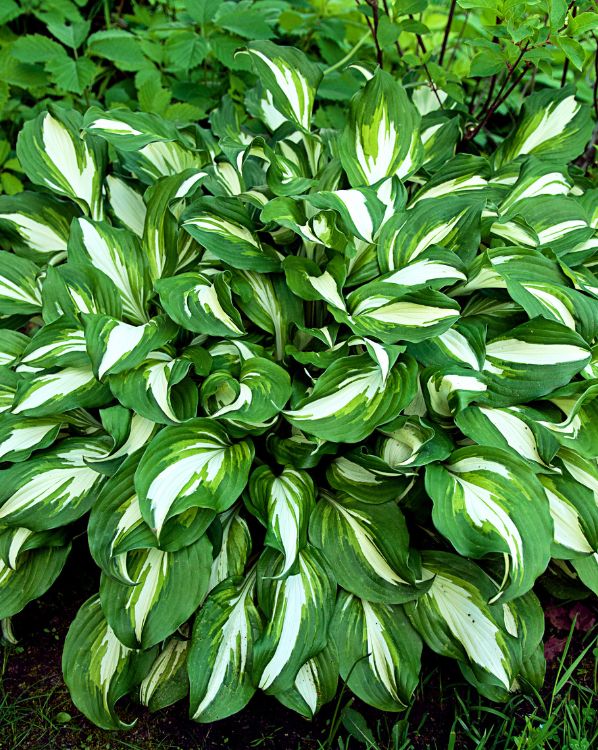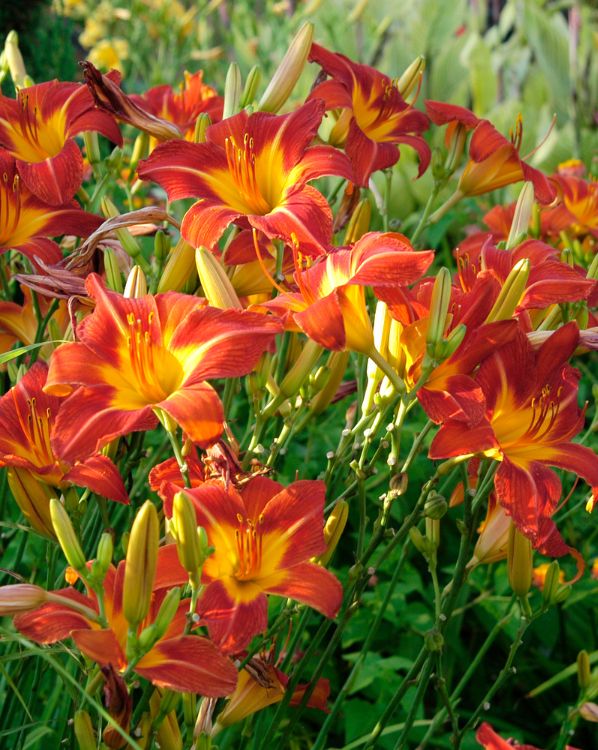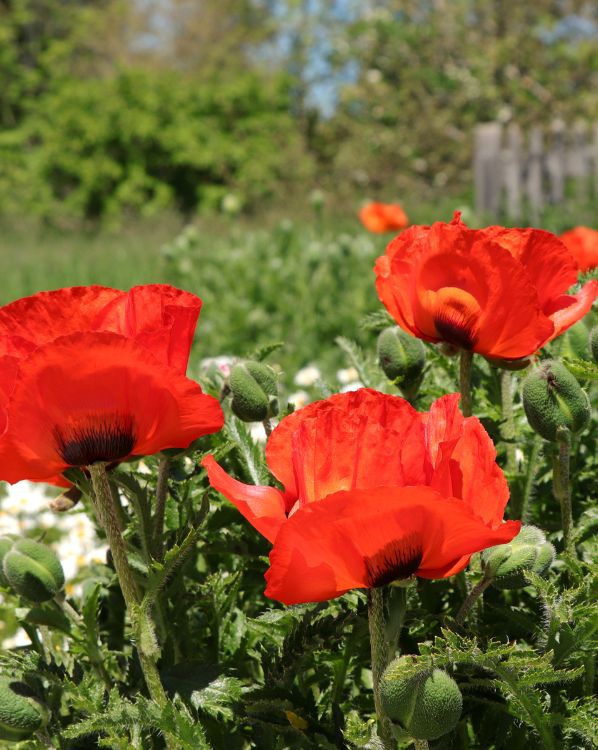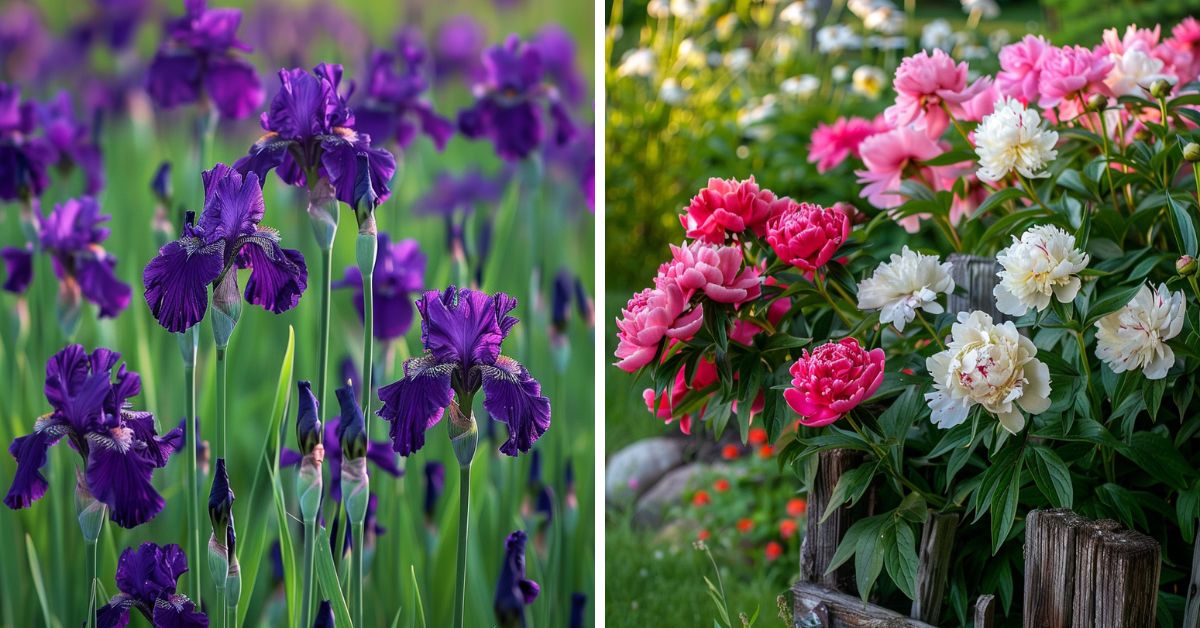September is a crucial month in the gardening calendar.
The weather begins to cool, but the soil remains warm, creating ideal conditions for transplanting.
Moving plants now gives them enough time to establish their roots before winter, ensuring they survive the colder months and thrive in the spring.
Over the years, I’ve found that some plants particularly benefit from being transplanted in September.
Delaying this task can lead to weaker plants that struggle to grow in their new locations.
In this article, I’ll share my experiences with specific plants that should be transplanted before September ends and offer advice on how to do it successfully.
1. Peonies

Peonies are a garden favorite, known for their lush, fragrant blooms that brighten up late spring.
However, they can be notoriously finicky when it comes to transplanting.
September is the best time to move peonies because the cooler weather reduces stress on the plants, and the warm soil encourages root development before winter.
I’ve transplanted peonies several times in my garden, and I’ve learned that the key to success is timing.
One year, I moved a mature peony that was struggling in a shaded area to a sunnier spot in September.
The following spring, it rewarded me with even more vibrant blooms.
To transplant peonies, start by cutting back the foliage to about 3-4 inches above the ground.
This helps reduce water loss and makes the plant easier to handle.
Carefully dig around the root ball, making sure to keep as much of the root system intact as possible.
Peonies have large, fleshy roots that can be easily damaged, so take your time.
When replanting, ensure that the eyes (the small, reddish buds at the base of the stems) are no more than 2 inches below the soil surface.
Planting too deeply can prevent the peonies from blooming.
Water the plant thoroughly after transplanting and add a layer of mulch to help retain moisture and protect the roots as they establish.
Related: How to Care for Peonies in September: A Gardener’s Guide
2. Bearded Iris

Bearded irises are known for their striking flowers and sword-like foliage, making them a popular choice for many gardens.
However, they can become overcrowded over time and benefit from being divided and transplanted.
September is the ideal time to do this, as the soil is still warm, which encourages root growth, but the cooler air temperatures reduce stress on the plants.
A few years ago, I noticed that my bearded irises were producing fewer flowers, and the clumps had become quite congested.
I decided to divide and transplant them in September.
The following spring, the irises were revitalized, producing more abundant and healthier blooms.
To transplant bearded irises, start by carefully digging up the rhizomes (the thick, horizontal stems just below the soil surface).
Be sure to get under the rhizomes to avoid damaging them.
Once they are out of the ground, use a sharp knife to divide the rhizomes into sections, ensuring each piece has at least one fan of leaves and a few healthy roots.
When replanting, position the rhizomes so that they are just below the soil surface, with the tops slightly exposed.
This ensures they don’t rot and can establish themselves quickly.
Water the irises well after transplanting and add a light layer of mulch to protect the roots and retain moisture.
3. Hostas

Hostas are a gardener’s go-to plant for shady areas, admired for their lush foliage and ease of care.
However, over time, hostas can become crowded and may need to be divided and transplanted to maintain their vigor.
September is the perfect time to move hostas, as the cooler weather helps reduce transplant shock and gives the plants time to establish themselves before winter.
I’ve divided and transplanted hostas many times, and doing so in September always yields the best results.
One year, I had a large hosta clump that was outgrowing its space.
After dividing it and transplanting the sections in September, I was pleased to see the plants thriving in their new locations the following spring.
To transplant hostas, begin by watering the plants thoroughly a day or two before you plan to dig them up.
This ensures the roots are well-hydrated and less likely to suffer damage.
Carefully dig around the clump, lifting it out of the ground with as much of the root ball intact as possible.
If you’re dividing the hosta, use a sharp knife or spade to cut the clump into smaller sections, making sure each section has several healthy shoots and a good portion of roots.
Replant the divisions in their new location, ensuring the holes are deep and wide enough to accommodate the roots comfortably.
Water the plants thoroughly after transplanting and add a layer of mulch to help retain moisture and protect the roots as they establish.
Related: How to Care for Hostas in September: A Gardener’s Guide
4. Daylilies

Daylilies are known for their hardy nature and vibrant blooms, making them a staple in many gardens.
However, like many perennials, daylilies can become overcrowded over time and benefit from being divided and transplanted.
September is an ideal time for this task because the soil is still warm, encouraging root growth, while the cooler air helps minimize transplant shock.
I’ve moved daylilies several times in my garden, often when they outgrew their space or when I wanted to spread their beauty to other areas.
One September, I divided a large clump of daylilies that had become too crowded and transplanted the divisions to a new bed.
By the following summer, the newly transplanted daylilies were thriving, with an abundance of flowers.
To transplant daylilies, start by digging up the clumps, being careful to keep the roots as intact as possible.
If you’re dividing the plants, use a sharp spade or knife to separate the clump into smaller sections, making sure each section has at least a few healthy shoots and roots.
When replanting, dig a hole deep and wide enough to accommodate the roots without crowding them.
Plant the daylilies at the same depth they were growing before, water thoroughly, and apply a layer of mulch to help retain moisture and protect the roots.
Related: How to Care for Daylilies in September: A Gardener’s Guide
5. Sedum (Autumn Joy)

Sedum, particularly the ‘Autumn Joy’ variety, is a favorite in many gardens due to its hardiness and late-season blooms.
These plants are easy to care for, but they can become overcrowded and benefit from being divided and transplanted.
September is the perfect time to move sedum, as the cooler temperatures reduce stress on the plants and allow them to establish strong roots before winter.
A few years ago, my ‘Autumn Joy’ sedum had grown into a large, unruly clump that was starting to crowd out other plants.
I decided to divide it in September and spread the divisions around the garden.
By the following year, each division had settled in beautifully and was producing the characteristic pink blooms that brighten up the fall garden.
To transplant sedum, start by carefully digging up the clump, trying to keep the root ball intact.
Use a sharp spade or knife to divide the clump into smaller sections, ensuring each section has a good amount of roots and shoots.
Replant the sedum divisions in a well-drained area with plenty of sunlight.
Plant them at the same depth as they were before, water thoroughly, and mulch around the plants to help retain moisture and protect the roots.
6. Black-eyed Susans (Rudbeckia)

Black-eyed Susans are cheerful, easy-to-grow perennials that bring a burst of yellow to the garden in late summer and early fall.
However, these plants can spread quickly and may need to be divided and transplanted to prevent overcrowding.
September is an excellent time to move black-eyed Susans, as the cooler weather helps reduce transplant shock.
I’ve found that black-eyed Susans are quite resilient when it comes to transplanting, but timing is key.
One year, I waited until October to move them, and they struggled to establish themselves before winter.
Now, I always make sure to transplant them in September, giving them plenty of time to settle in.
To transplant black-eyed Susans, dig up the clumps carefully, keeping as much of the root system intact as possible.
If you’re dividing the plants, use a sharp spade to separate the clump into smaller sections, ensuring each section has several healthy shoots and a good amount of roots.
Replant the divisions in a sunny location with well-drained soil, at the same depth they were growing before.
Water the plants thoroughly after transplanting and mulch around the base to help retain moisture and protect the roots.
Related: How to Care for Black-Eyed Susans in September: A Gardener’s Guide
7. Oriental Poppies

Oriental poppies are known for their vibrant, showy blooms that grace the garden in early summer.
However, these plants can become crowded over time and benefit from being divided and transplanted.
September is the ideal time to move Oriental poppies because the plants are entering their dormant phase, which reduces transplant shock.
I’ve transplanted Oriental poppies a few times in my garden, and I’ve found that doing so in September is the key to success.
One year, I moved a clump that had become overcrowded, and the following spring, the newly transplanted poppies produced an even more spectacular display of flowers.
To transplant Oriental poppies, start by cutting back the foliage to reduce water loss and make the plant easier to handle.
Carefully dig up the clump, keeping as much of the root system intact as possible.
If you’re dividing the plants, use a sharp spade to separate the clump into smaller sections.
When replanting, ensure that the roots are spread out in the planting hole and that the crown of the plant is at the same level as before.
Water the plants thoroughly after transplanting and mulch around the base to help retain moisture and protect the roots.
8. Phlox

Phlox is a popular perennial known for its clusters of fragrant, colorful flowers that bloom in the summer.
However, phlox can become overcrowded over time and may need to be divided and transplanted to maintain its vigor.
September is the perfect time to move phlox, as the cooler weather helps reduce transplant shock and gives the plants time to establish themselves before winter.
A few years ago, my phlox had become too crowded, resulting in fewer flowers and weaker plants.
I decided to divide and transplant them in September, and by the following summer, the phlox had bounced back, producing more abundant and healthier blooms.
To transplant phlox, start by carefully digging up the clumps, keeping as much of the root system intact as possible.
If you’re dividing the plants, use a sharp spade or knife to separate the clump into smaller sections, ensuring each section has several healthy shoots and a good amount of roots.
Replant the phlox divisions in a sunny location with well-drained soil, at the same depth they were growing before.
Water the plants thoroughly after transplanting and mulch around the base to help retain moisture and protect the roots.
9. Daisies (Shasta Daisy)

Shasta daisies are a classic garden favorite, known for their cheerful white blooms that add a touch of brightness to any garden.
However, these plants can become overcrowded and may need to be divided and transplanted to maintain their health and vigor.
September is an ideal time to move Shasta daisies, as the cooler temperatures help reduce transplant shock.
I’ve divided and transplanted Shasta daisies several times, often when they start to outgrow their space.
One year, I moved a large clump of daisies that had become too crowded, and by the following summer, the newly transplanted sections were thriving and producing more flowers.
To transplant Shasta daisies, start by carefully digging up the clumps, keeping as much of the root system intact as possible.
If you’re dividing the plants, use a sharp spade or knife to separate the clump into smaller sections, ensuring each section has several healthy shoots and a good amount of roots.
Replant the daisy divisions in a sunny location with well-drained soil, at the same depth they were growing before.
Water the plants thoroughly after transplanting and mulch around the base to help retain moisture and protect the roots.
Related: How to Care for Daisies in September: A Gardener’s Guide
10. Asters

Asters are a staple of the fall garden, known for their daisy-like flowers that bloom in a variety of colors.
However, like many perennials, asters can become overcrowded and benefit from being divided and transplanted.
September is the perfect time to move asters, as the cooler weather helps reduce transplant shock and gives the plants time to establish themselves before winter.
I’ve transplanted asters several times in my garden, often to spread their beautiful blooms to other areas.
One September, I divided a large clump of asters that had become too crowded and transplanted the sections to a new bed.
By the following fall, the newly transplanted asters were thriving and adding a burst of color to the garden.
To transplant asters, start by carefully digging up the clumps, keeping as much of the root system intact as possible.
If you’re dividing the plants, use a sharp spade or knife to separate the clump into smaller sections, ensuring each section has several healthy shoots and a good amount of roots.
Replant the aster divisions in a sunny location with well-drained soil, at the same depth they were growing before.
Water the plants thoroughly after transplanting and mulch around the base to help retain moisture and protect the roots.
Final Thoughts
September is a critical month for transplanting in the garden.
As the weather cools and the growing season begins to wind down, it’s the perfect time to move plants to new locations where they can thrive in the coming year.
By taking the time to transplant your peonies, bearded irises, hostas, and other plants before the end of September, you’re giving them the best chance to establish strong roots before winter.
I’ve learned through years of gardening that transplanting in September can make all the difference in the health and productivity of your plants.
So, as you tend to your garden this month, remember to transplant these specific plants before September ends.
Your garden will thank you for it, and you’ll be rewarded with a healthier, more beautiful garden next year.
